|
|
 Jen Jen
|
 |

|
|
You Feel It Just Below the Ribs
Jeffrey Cranor and Janina Matthewson
This book is fiction. More specifically, it’s historical fiction. Even more specifically, it’s alternative history fiction, which means it’s dystopian. Here’s the premise: The life story of Dr. Miriam Gregory is found hidden in Stockholm. Dr. Gregory was a well-known psychologist during her lifetime. However, those who find her manuscript are skeptical of its veracity. A publisher decides to publish Dr. Gregory’s work, annotated. The footnotes are a key part (and entertaining!) of this book. In the beginning, the footnotes gently let the reader know that in fact Dr. Gregory has this or that fact wrong – for example, such and such happened in 1918, not 1919. Gradually, the footnotes become less objective and include notes along the lines of, wow Dr Gregory is pretty full of herself. It’s never spelled out exactly when the past in this book diverges from the real past, which is part of the fun of the book – I found myself checking google for some bits. For example, in this book, President Taft was assassinated in the 19-teens, whereas he actually lived until 1930. In this alternate history, a New Society forms which decides the root of all problems is tribalism and so the traditional family is dissolved. Couples can choose to have children, but at some point, their children will be removed from the home, have their minds wiped, and will be sent to a new home. I think this book is for the readers of A Handmaid’s Tale. This is a book I inhaled.
|
| |
|
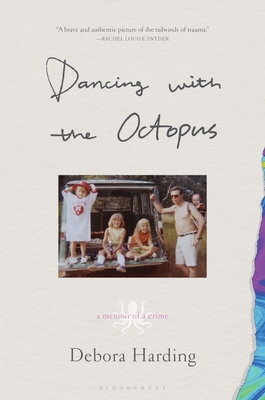
|
|
Dancing with the Octopus
Debora Harding
Dancing with the Octopus is a memoir of a crime. In November 1978, Debora Harding was 14 years old and living in Omaha, Nebraska. An ice storms hit the city and rather than take the bus home from school, Debora decided to walk to church, thinking that the church activity planned for that evening will take place. When she reached the church, there was a note on the door saying the activity was canceled. From the church parking lot, Debora was abducted at knifepoint, driven around, assaulted, held for ransom, and then abandoned alone in the ice storm. I’ll tell you right now that the details of the assault are off-stage, so don’t let the fact that there’s an assault prevent you from reading this. Debora survived the ordeal remarkably well, likely because she had developed coping mechanisms from living with her narcissistic mother. Despite this, Debora suffered from PTSD which lasted well into adulthood. The narrative is presented in very short, titled chunks. Each titled chunk begins with the words, “In which”, such as “In Which I Make an Unusual Friend” or “In Which My Father and I Share Notes on Depression.” Debora is the middle of three daughters with a caring, but weak-when-it-comes-to-Mom father and a mother whose license to mother would be revoked if such a thing existed. If you liked memoirs like Educated or Glass Castle, this is one you should read. |
| |
|
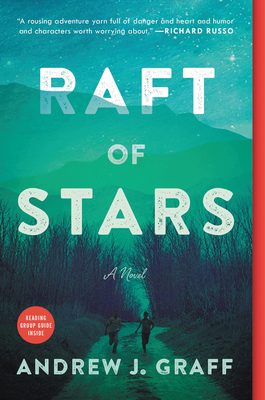 |
|
Raft of Stars
Andrew J. Graff
This is the best book I read for Night-In and I think it will the best book I’ve read in general for a while. If you like stories like A River Runs Through It or Peace Like a River, you don’t want to miss this story. In 1994 there are two 10-year old friends, Dale Breadwin, known as Bread, and Fischer Branson, known as Fish. They live in the very small town of Claypot Wisconsin. Fish lives with his widowed mom and spends a lot of time at his grandfather’s, Teddy. Bread lives with his widowed dad who has become increasingly mean since the death of his wife. Fish asks Bread to stay overnight at his grandfather’s as often as possible. On one night when Bread’s dad won’t allow it, Fish has reached his breaking point with the cruelty of Bread’s dad. After leaving Bread, Fish returns to the Breadwin house with a gun and shoots Bread’s dad. Seeing the man drop, the boys believe him to be dead and they run away. Despite having been friends for years, Bread does not know that Fish’s dad passed away because Fish continually lies about his dad being deployed—in the minds of both boys, Fish’s dad is the ultimate hero. The two boys decide to run away to the armory to Fish’s dad and let him sort out what to do. The best way to reach the armory, in the minds of the boys, is by river. They build themselves a raft and set off. As you can well imagine, the survival of two young boys in the northwoods wilds is trying. Searching for the boys is soft-hearted Sheriff Cal, who doesn’t really want to be in law enforcement and is trying to muster the courage to ask Tiffany, a local gas station attendant who likes to write poetry and dons purple bangs, out on a date; Teddy, Fish’s grandfather; Miranda, Fish’s mother, who is a peculiar mix of woods-smart and a devoted Pentecostal; and Tiffany, who has had a hard life and likes Sheriff Cal as much as he likes her. The story and the characters of this book will stay with me for a long, long time.
|
|
 Sally Sally |
|

|
 |
Gichigami Hearts
Linda LeGarde Grover
At Night In, we try to introduce you to books and authors you may not know. For this reason, we rarely feature an author more than once. This year is an exception. Linda LeGarde Grover is a Minnesota treasure. She’s a professor of American Indian studies at the University of Minnesota Duluth, and a member of Bois Forte Band of Ojibwe. Her latest book, Gichigami Hearts, was published by the University of Minnesota Press last fall.
When I’ve been in Duluth I’ve walked the streets, looking at the sights. Lake Superior, steep streets, old buildings, interesting churches. This is not what Grover sees when she walks the same streets. She sees, in imagination and in memory, generations of her family, myths and legends of her people, and the places which are sacred to them. Past, present, and future co-exist in this powerful and lyrical book.
Although the book is small, it’s not a quick read. Read each section slowly; then read it again, with an open heart. Grover offers us a rare opportunity to enter into another culture, serving as our sensitive guide. Migwech, Linda. |
| |
|

|
|
The Liar’s Dictionary
Eley Williams
The Liar’s Dictionary is, without a doubt, the quirkiest book on the Night In list. It will delight anyone who loves words, anyone who loves dictionaries, and anyone who’s ever used a dictionary to look up one word only to emerge half an hour later, having looked up synonyms, traced one or more etymologies, and generally lost themselves in the pleasure of it all.
And here’s a word to start us out: mountweazel. This is a false entry in a dictionary, a spurious, made-up word. The original purpose of mountweazels was to act as a safeguard against copyright infringement. Mountweazels, as we shall see, have an important role in The Liar’s Dictionary.
The book is bursting with words! Each chapter begins with a word and its definition. It starts with “A is for artful (adj.)” and continues to “Z is for zugzwang (n.)” And words rain down through all the chapters in between, synonym on synonym.
In addition, the book actually has a plot! It concerns two young people who work for Swansby’s New Encyclopaedic Dictionary, 100 years apart. Peter Winceworth, who affects a fake lisp, is working on the S section. For his own reasons, which include boredom, he creates mountweazels and distributes them generously throughout the dictionary. 100 years later, the dictionary is a bit of a laughingstock because it’s never been completed. Mallory is hired as an intern to answer the phone and identify mountweazels.
And the plot thickens, which Merriam Webster says is a phrase used to say that the story becomes more complicated or interesting. |
| |
|
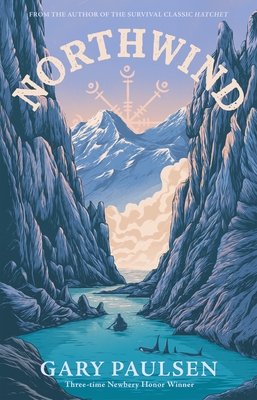 |
|
Northwind
Gary Paulsen
The book groups at the store generally read a young adult book during the year, and we usually include one such title at Night In, too. Why read books for kids? There’s a lot of great literature coming out which is written for them. It’s a way to keep up with the culture of our young people and can provide a way to connect with them.
Northwind is the final book by the prolific and beloved Gary Paulsen. He died in October, and the book was released January 11. Paulsen was best known for his wilderness adventure novels, and this final book is a strong end to his remarkable career.
Leif, a young orphan who has spent much of his life at sea, is in a fishing camp with several sailors and a younger child, Little Carl. Cholera suddenly visits the camp, and one by one, it afflicts everyone. Old Carl, who had always been kind to Leif, sent him and Little Carl in a canoe with a few supplies and instructions to go north, and not to return.
Leif follows these instructions. He and Little Carl both become ill; Little Carl dies but Leif eventually recovers. He continues to follow Old Carl’s directions, always heading north, into the unknown.
Leif learns to fend for himself and lives on blackberries and salmon. He faces danger from bears, whales, and a whirlpool, always learning from his observations and experiences. He uses the paltry resources he has and improvises when they give out. When he can no longer spear salmon, he devises another way to capture them.
There are strong references to Scandinavian mythology and folklore throughout the book, which begs to be read metaphorically as well as a great adventure story. Read it with young favorite young adventurer! |
| |
|
 |
|
The House on Vesper Sands
Padraic O’Donnell
What? A book recommended by one of my favorite writers, Helen MacDonald? That was enough for me to reach for The House on Vesper Sands, by Padraic O’Donnell. It’s the first publication in the United States of a book by this Irish writer.
It’s a February evening in London in 1893. A number of people are moving through eerie shadows in the nearly empty streets. Esther Tull, a seamstress, is hiding an unspecified pain as she approaches the home of Lord Strythe. Gideon Bliss has been summoned from Cambridge by his mysterious uncle Reverend Doctor Herbert Neuilly, who is also his guardian. Instead of finding his uncle, he encounters Inspector Cutter, a detective who is serious about his work but also extremely funny. Octavia Hillingdon, an aspiring young journalist, is dashing about in the snow on her bicycle. She’s hoping to persuade her employer to let her cover stories other than women’s society news.
Eventually, it becomes clear that these people are all somehow connected to the disappearances of a number of young women. It’s rumored that a group called The Spiriters, perhaps headed by Lord Strythe himself is stealing the souls of the women.
 The book defies categorization—it’s a mystery, it’s literary fiction, it’s gothic, it’s also laugh out loud funny and is a great read! The epilogue seems as though it’s setting up another book. One can only hope so! The book defies categorization—it’s a mystery, it’s literary fiction, it’s gothic, it’s also laugh out loud funny and is a great read! The epilogue seems as though it’s setting up another book. One can only hope so!
Note: since Night In, we’ve learned that O’Donnell’s next book will be out in June!
|
|
 |
 |
 |
|
|

Brita |
|

|
|
Winter’s Children
Ryan Rodgers
This winter has given those of us in northern Minnesota the chance to again experience a real winter: one with sufficient snow, enabling us to get outdoors to snowshoe, downhill and cross-country ski, ski- jump, snowboard, and a host of other snow related pursuits. At least that is one way to look at it.
When we had our fill of the outdoors for a while, there was a new book on the subject of cross-country skiing, to read—“Winter’s Children” by Minnesota author and skier, Ryan Rodgers.
This book is a treasure, chronicling the rich history of cross-country skiing and ski jumping in Minnesota and the rest of the snow-belt of the upper mid-west. While we can read quite a bit about the early farming and logging communities and struggles with weather, rarely do we see much about finding fun, fitness, and exhilaration in our longish winters. Skiers and history buffs alike will be intrigued to learn about—or in some cases recall- the ski races and jumping competitions around Minnesota such as in Red Wing, where in 1928, twenty-five thousand spectators watched the U.S. national ski championship. Other locations including Duluth, the Twin Cities metro area, Fergus Falls, Grand Rapids, Stillwater, Mora, Glenwood, Biwabik, Detroit Lakes, Bemidji and dozens of other communities have hosted events and encouraged the skiing tradition. To supply the skiers, companies such as Strand and Northland (Lund) set up factories in Minnesota which produced thousands of skis, many of which still grace ski lodges and garage walls around the country. Rodgers’ book brings the reader up to present day with Olympic medalist Jessie Diggins and with how the ski sport and way of life has evolved in Minnesota. I’m looking forward to meeting Rodgers on April 2!
|
|
| |
 |
 |
 |
|
|

Bob |
|

|
|
Creation Machine
Andrew Bannister
This book is set in all stretches of imagination in deep space worlds to come. Multiple stories are woven together to make an uncomfortable picture of the future universe. It appears the worst of humankind is the winner. So how does one survive? Despite its futuristic vision, the same scenarios of survival as yesterday are presented. There are no true heroes. Everyone is making deals and double-crossing…survival of the most connected, the wealthiest…. even father and daughter warring with each other.
An interesting if perplexing sci-fi book with spaceships on the cover.
|
|
   |
|

Doni |
 |

|
 |
Love & Saffron: A Novel of Friendship, Food, and Love
Kim Fay
The friendship begins when 27-year old Joan, from Los Angeles, writes a fan letter to 59-year old Imogen, a monthly column writer for a Pacific Northwest magazine. Imogen lives on an island in Washington and writes of cooking with elk she has hunted and clams she has dug. She is not quite sure what to do with the gift of saffron that Joan includes in her letter!
The food is the backbone of the story. Set in the 1960’s, this epistolary novel shows both women, as well as the men in their lives, discovering new foods and venturing far and wide to do so. But besides food, the women find comfort during the turbulent times of the 60’s, including the assassination of JFK and their own personal turmoil.
The love is the heart of the novel. Through long, descriptive letters, the two share their deepest thoughts and secrets. They become best friends in spite of almost never meeting.
The style of writing works beautifully for this book, with both women’s voices authentic and honest.
I admit it made me write a few long-neglected cards!
|
|
| |
 |
 |
 |
|
|

Gina
|
|

|
|
Crossroads
Franzen
Crossroads is the first installment of Franzen’s A Key to all Mythologies trilogy. It is a family saga dissecting the events of the Hildebrant family from December 1971 to Easter a few years later. The Hildebrants appear to be the All American Midwestern family. We follow Russel, who is an associate pastor at a progressive suburban church that has a teen program called Crossroads; his wife Marion; their four children Clem, Becky, Perry, and Judson. As their stories unfold, we see that the outside appearance does not match the turmoil that lies within each of these characters.
I would recommend this book to anyone who enjoys TV shows similar to “This is Us” or “Brothers and Sisters.”
|
| |
|

|
|
Winter
Ali Smith
Winter is the second book in Ali Smith’s Seasonal Quartet.
Art, Charlotte, Iris, and Sophia gather at a house in Cornwall for Christmas. They all know each other but at the same time are complete strangers. During their time in Cornwall, they each reminisce, slide from present to past in the slow meandering way that the stillness of winter nurtures. There are smart insights on what is happening in our current times, different takes on the word winter and the book is filled with beautiful prose.
If you love winter (my personal favorite season) you may enjoy this. |
| |
|
 |
|
French Braid
Anne Tyler
In French Braid we follow the stories of Mercy the dreamy artistic introvert; Robin a simple content man; and their three children, Alice the levelheaded eldest, Lily the airy boy-crazy middle child, and David, their quiet son with the soul of a child.
Tyler writes about the simple monotony of daily existence and family dynamics in a way that keeps you engaged without needing a story that is salacious. Her writing allows you to feel that you fully understand these characters and their stories in a concise 256 pages. Words are not wasted here.
One of my favorite lines I’ve read this year comes from this book; “Just run the race your own way, I say. Don’t fret about the others.”
Note: this book will be released March 22 and may be pre-ordered now.
|
| |
|
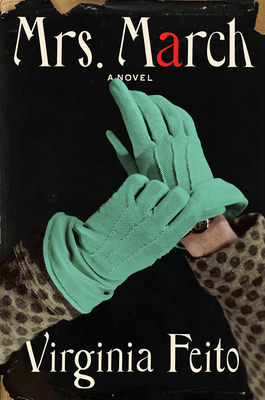
|
|
Mrs. March
Virginia Feito
Mrs. March is as prim as they come. She is married to George March, whose latest book is an instant hit. Mrs. March is proud of her husband, even if she hasn’t read the book, and beams when people mention its success. Until one day someone asks if the main character in the book is based on Mrs. March. All she knows of the book is that the protagonist is an unlikeable prostitute. Mrs. March is floored and thus begins her unraveling.
This book really gets inside your head. You can feel all of Mrs. March’s chaotic emotions and spinning thoughts. I found myself setting the book down several times because I felt so uncomfortable for Mrs. March.
I recommend this book to people who enjoy Ottessa Moghfegh or Gillian Flynn. |
| |
|
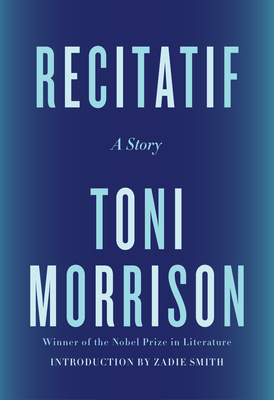
|
|
Recitatif
Toni Morrison
This is Morrison’s only short story, and it packs a punch. Twyla and Roberta, both separated from their respective mothers, try to make the best of a less than ideal situation that bonds them over their four-month stay at St. Bonaventure shelter. Life takes them each on separate paths but every few years they run into each other: at a diner, a grocery store, and a protest.
In this story we know one girl is white and one girl is black. But which is which?
This is the most impressive short story I have ever read. It brought up a lot of questions about how we perceive things. This tiny story would be perfect for a group discussion. |
|
| |
|
|
|
|
|

Hannah |
|

|
|
Bewilderment
Richard Powers
A very bright nine-year old boy is filled with rage and wonder and fear and love. His father, an astrobiologist, calms him by traveling with him to the infinite number of planets that contain life with a wild array of descriptions. They do well in the opening chapters, camping in the Smoky Mountains and telling such stories under the starry sky. But they have to go back to the real world: global warming, the political mess (a President Trump on steroids, one of several characters that are similar to ones in our real life), and the boy’s school crisis. The father struggles to keep his son off medication and to keep up his own work at the university. His solution takes us into the world of science fiction. Well, further in. Actual, fascinating scientific facts are mixed up with those trips to far planets in a way that can make you question what’s true. This book is not for people who want only cheerful novels. But it does provide a sense of awe about our planet. Father and son both grieve for the boy’s mother, who had truly loved all sentient beings, but the boy, and then his father, find their way back to her ecstasy. At least for a while.
|
| |
|
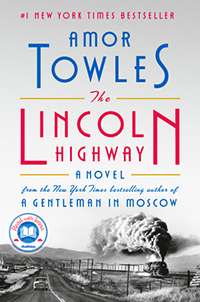
|
|
The Lincoln Highway
Amor Towles
As I read this, I kept finding myself thinking phrases like “Oh no!” and “Oh my God!” and “Uh-oh!” and “Ah ha!” But between those startling moments there were pages filled with tenderness and awe. I only picked this book because I’d seen it so much in the Beagle and Wolf newsletter: I find the title and book cover boring. The novel starts, as expected, like the record of a road trip. But the characters and incidents spread out far and wide. You’ll be sorry when the journey is over.
|
| |
|
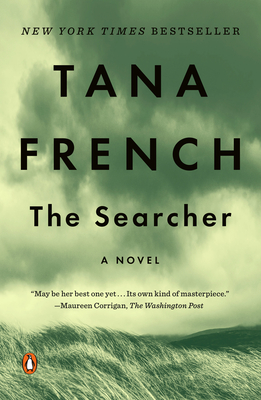 |
|
The Searcher
Tana French
This is the best mystery I’ve read in a long time. It’s beautifully written, with wonderful characters, plotting, and sense of place. A Chicago cop has burned out and seeks peace and quiet in a small mountain town in Ireland. He's working to restore a dilapidated house, taking long walks, and trying to tame a tree-full of rooks. Everything is fine until a neighbor kid starts peeking in his windows. As the story unwinds, the cop is aware that he doesn’t know what’s going on, that his Chicago experience doesn’t prepare him to assess the implications of what he hears from the villagers. He’s out of his element and losing the peace he came for.
The only false note in the book is that Tana French, an Irish woman, exposes her lack of knowledge of the American Midwest by saying that in Chicago the weather never changes rapidly or unpredictably. She clearly hasn’t spent much time here… but she paints a picture of rural Ireland that rings true. |
|
| |
 |
 |
 |
|
|

Lee |
|
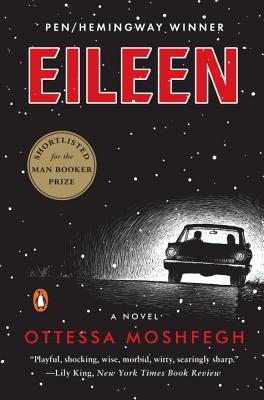
|
|
Eileen
Ottessa Moshfegh
I had not read anything by Ottessa Moshfegh, and this was recommended by one of the many amazing people at Beagle and Wolf.
What a... strange. narrator. Eileen is amazingly unwell, both physically and mentally. She is friendless, lives (and sometimes drinks) with her alcoholic father (whose shoes she keeps in the trunk of the car, so he cannot leave the house), and cares little (very little) about personal appearance or hygiene.
Even so, she is writing as an older woman, looking back on 1964, when she was 24. And she seems, perhaps, satisfied with where her life has led her.
As the novel progresses, I found myself hoping that maybe, just once, she could have a bit of success or happiness. Or, at least, avoid the worst possible outcome in the current moment. It is an amazing author who can get us to really care for Eileen.
|
|
| |
|
| |
|
|
|

Tim
|
|

|
|
The Pale Battalions
Robert Goddard
Recently I took my laptop in to be serviced. I'm now 10 days into a cold turkey media fast. It's been a real eye-opener, some of it none too pleasant. One good outcome is that I'm making inroads on my pile of 'to be read books.’ Don't smirk, I know you have a guilty little pile of your own. I knew Robert Goddard's The Pale Battalions was going to be good, but I was not prepared for it being far better that I had ever anticipated. Set in three periods of time, it explores how the characters struggle to rebuild their lives having survived the shattering effects of WWI, and the fiendish cruelty of a stepmother (one of the most evil characters I've ever encountered). Goddard is described as "a master of the sly double- and triple-cross", and it's true.
Note: this book is out of print, but we tracked down a copy for Tim and we’d be glad to do the same for you.
|
| |
|
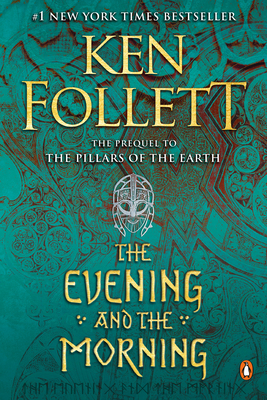
|
|
The Evening and the Morning
Ken Follett
This book is the prequel to Follett's The Pillars of the Earth. It begins in 977 AD and is set in Saxon England. For us, at this distance in time, Saxon England is the stuff of legend. A curious semi-civilized period of several hundred years after the Roman attempts at settlement and civil administration have ended. The inhabitants of the British Isles struggled to reinvent themselves all the while experiencing conversion to Christianity, and as the Vikings raided their settlements regularly. It's a period where Feudalism was slowly being developed as an imperfect antidote to crude thuggery. Follett has set the story in the last decades before the great Norman invasion of 1066 AD. It is an exploration of what is a much-neglected period of history, done as historical fiction, and done at its very best. |
|
|
Would you like to be a guest reviewer?
Email Sally at sally@beagleandwolf.com |
| |
|
|
|
|
|
— page top —
|
|

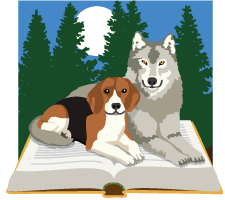




 Sally
Sally












 The book defies categorization—it’s a mystery, it’s literary fiction, it’s gothic, it’s also laugh out loud funny and is a great read! The epilogue seems as though it’s setting up another book. One can only hope so!
The book defies categorization—it’s a mystery, it’s literary fiction, it’s gothic, it’s also laugh out loud funny and is a great read! The epilogue seems as though it’s setting up another book. One can only hope so!













